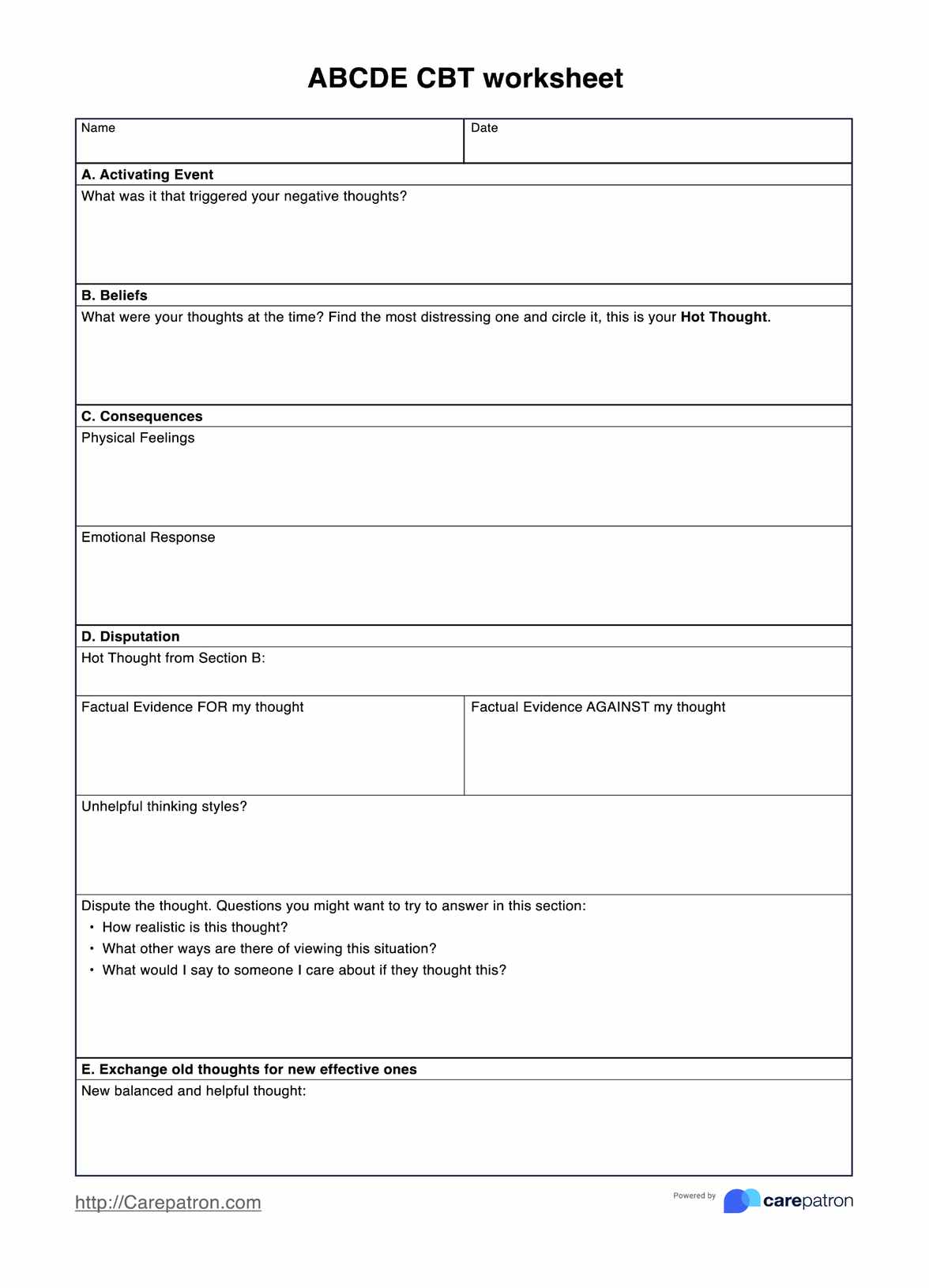The worksheet guides you through examining the evidence for and against your thought, identifying any cognitive distortions, and asking reflective questions like "How realistic is this thought?" or "What would I say to a friend who thought this?" These steps help you see the thought more objectively and challenge its validity before replacing unhelpful beliefs with healthier thoughts.

ABCDE CBT Worksheets
Help your clients identify and challenge negative thought patterns with our ABCDE CBT Worksheet.
ABCDE CBT Worksheets Template
Commonly asked questions
The ABC model includes Activating Event, Beliefs, and Consequences—the basic structure for understanding how thoughts create emotional and behavioral consequences. The ABCDE model adds two more steps: Disputation (challenging the belief) and Exchange (creating a new, helpful belief). This gives it a sense of action-orientation and being solution-focused.
The ABCDE worksheet is useful for addressing a wide range of negative thought patterns, including irrational beliefs, catastrophizing, self-defeating beliefs, overgeneralization, and other cognitive distortions. It's commonly used to manage anxiety, depression, anger, and other emotional challenges rooted in distorted thinking.
EHR and practice management software
Get started for free
*No credit card required
Free
$0/usd
Unlimited clients
Telehealth
1GB of storage
Client portal text
Automated billing and online payments











